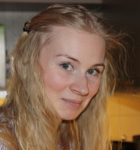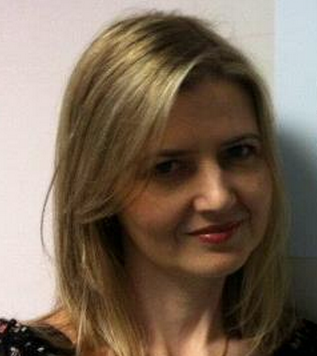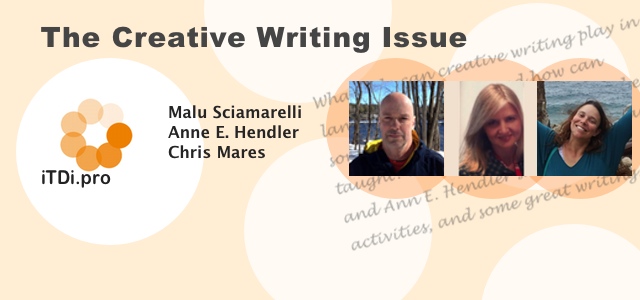
Ready To Write – Chris Mares
I vividly remember my first experience with creative writing in the classroom. I was a lower sixth student at Lewes Priory Comprehensive School in the summer of 1975, sitting in young Miss Matthew’s English class. It was a beautiful, blue-sky morning. I was watching a mini-skirted girl I vaguely knew from the upper sixth walk by outside, a chill of desire in my belly, exacerbated by the smell of patchouli exuding from Miss Matthews as she lent towards me, her long, thick black hair almost touching my face as it tumbled over her white of her hippy blouse. I was in love.
But not with Miss Matthews.
“Are you listening Chris?” Miss Matthews asked.
“Yes,” I said, instinctively. Though I wasn’t. Not really.
“Then write something. How does it make you feel? What does it do to you?” Miss Matthews paused, then stood and moved on to another student.
We were listening to Lou Reed’s album Transformer. Miss Matthews had told us, as she put the vinyl album on the record player, that we were going to listen and write. The class sat in bemused disbelief. We’d never done anything like this before and I had felt that Miss Matthews just couldn’t be bothered to teach us anything. I had stared at my paper as the needle touched the vinyl and the music began. Nothing happened. My mind, though, was unknowingly awash with untapped creativity. It could all have gone very differently.
There are powerful reasons for using creative writing activities in the classroom but there is also a need for structure and procedure. Miss Matthews, though her intention was good, had plunged us in too quickly. She had not led us to the point of creativity. Our schema had not been raised. We were at sea, at a loss.
Alan Maley, in his excellent piece Creative Writing for Students and Teachers draws a distinction between expository writing and creative writing pointing out, importantly, that creative writing draws primarily on the right side of the brain, the side associated with intuition, feelings, and creativity, as opposed to the logical and analytical left side. For many students the switch in focus from the instrumental requirements of expository writing to the aesthetic permissions of creative writing can be extremely rewarding and thus motivating. For a student to produce an original poem, for example, results in a feeling of deep and genuine satisfaction, especially for beginner writers with a limited language repertoire in English.
I would argue that building creative writing into students’ writing experience from early on will help with their self-esteem and self-confidence as well as help them develop strategies such risk taking and that will help them become more effective language learners.
Creative writing also fosters an understanding of the playful nature of language that is common to all cultures yet rarely touched upon in most classrooms. In our stories we play with collocation, connotation, and puns, for example. We also bend and stretch rules. This is all part of the fun and joy of language.
At its most basic level creative writing activities for the classroom can involve simply completing a stem sentence.
I wish I was good at …
I wish I knew how to …
I wish I could visit …
I wish I could speak …
It can also involve the addition of words within the structure of a poem.
First name
Who wants (three things)
Who loves (three things)
Who feels (three things)
Family name
Or
I am (two special characteristics you have)
I wonder (something you are curious about)
I hear (an imaginary sound)
I see (an imaginary sight)
I want (an actual desire)
I am (the first line of the poem repeated)
Another fun form is the acrostic where students read a word vertically, in this case, ‘love’, and then write a phrase related to love beginning with each letter of the word love.
Longing to see you
Over the moon
Very happy
Enjoying your warmth
A Favorite Creative Writing Activity
Short poems or haiku can be very evocative and be used as the basis for creative writing exercises. A favorite of mine is Alan Maley’s haiku, Thinking of You.
Thinking of You
Thinking of you
Twenty nine thousand feet below
And eight years ago
Procedure
For any creative writing activity to be effective students need to be interested and engaged and their individual schema need to be raised. The way to do this depends on the particular class but a generic way I have done this is as follows:
- Ask the class if anyone likes to read. Establish what people like to read, whether they are reading anything at the moment, whether they read for pleasure, etc.
- Ask the class if anyone likes to read poetry or has read any poetry, or has even written a poem.
- Tell the class that you are going to read them a short poem and you want everyone to close their eyes and just listen and see what they see in their mind as you read the poem.
- Read the poem slowly.
- Tell the class you are going to read the poem again and this time students are going to write it down. Having done have students in pairs take turn reading the poem to each other.
- Next write the following questions on the board: Who wrote the poem? Where was this person when she or he wrote the poem? Why did they write it? Tell the students there is no right answer and encourage them to be creative.
- Have each pair share their ideas with the class.
- The next phase depends on the creative license of the teacher. In my case I tell the students I know who wrote the poem and what it’s about. Ask students if they’d like to know more.
- Tell them that Alan Maley wrote the poem. This is true. What follows is my own embelishment. Tell them that Alan used to work in India and at one point he was flying home to England when the captain said, “If you are sitting on the right hand side of the aircraft and you look out of the window you will see the city of Florence. I tell the students that Alan looked out of the window and suddenly memories from the time he lived and worked in Florence come flooding into his mind. He takes out his notebook and almost without thinking writes the haiku.
- I then tell the students that each of them is Alan and that when they get home, having written the poem themselves about a relationship he had once had with ‘Julia’, he decides to take action. We then brainstorm what he could do, for example: google Julia, find her contact information, text her, email her, write her a letter, call her, return to Florence and try to locate her. Having established a range of possibilities, have students in pairs work on one of the courses of action Alan could take.
- Students are then given time to write a text, email, letter, dialog, etc. If there isn’t enough time then the class can work together under the teacher’s guidance.
- After students have completed their task have them share with the class.
As an aside, I emailed Alan Maley a couple of days ago to verify that Thinking of You had been written by him. Here’s what he said:
Dear Chris,In haste, as I am in Mexico on my way back to UK.
Yes, it is my haiku. And thanks for using it!
All the best
Alan
I am sure Alan would be happy if you used his haiku, too.
Visualization
In order to foster creativity it is useful to build visualization activities into one’s repertoire. Here is a generic visualization activity:
- Tell students to relax and close their eyes. Tell them that they are going on an adventure.
- Tell students to imagine that they are standing on a street in a town they know. Ask the students what time of year it is/day it is/what the weather is like etc. Have them make notes.
- Tell the students that they are now walking along the street and they hear a noise. Ask them what the noise is. Have them make notes.
The ‘story’ continues to be shaped by the teacher but is written by the students. There is clearly a lot of latitude for creativity by both the teacher and students. Students can be steered towards producing dialogs and therefore practicing the use of direct or indirect speech.
Some suggestions on the use of Creative Writing activities in the classroom
If students are not used to activities that require creativity it may take some time to train them to feel comfortable and let go. This is understandable. With this in mind it is worth building creative writing into one’s teaching repertoire, once a week for example. Make sure tasks are completed and that students share their writing either in class or have their writing displayed either in the classroom or electronically. This will motivate students as they will feel invested and validated.
The stem sentences can all be altered according to the students’ needs, level, and interests. It is also fun to play with forms of poems. Extra lines can be added, prompts changed, etc.
The language learning benefits from creative writing are clear. Risk taking benefits learning as does playing with language and learning about collocation and connotation through experimentation. The rewards are clear: personal pleasure, an increase in self-confidence and self-esteem and a resulting increase in motivation.
Returning to Miss Matthew’s classroom all those years ago. I wonder if the class might have gone differently the class had a more structured flow. Miss Matthews could have pointed out that it was a beautiful day. She could have asked us what made it beautiful. She could have asked us to write down what would have made it perfect. We could have shared answers with each other, then as a class. Miss Matthews could then have told us she wanted to listen to a song with our eyes close and to try and picture the song based on the lyrics and the feel of the music. She could have asked us to imagine the people in the song, where they were, what they were wearing, what they were saying. She then could have selected one track, Perfect Day, and we could have listened.
After that, our schema raised, our minds dancing with imagery, we would have been ready to write.
References
Maley, Alan, Creative Writing for Students and Teachers in Humanizing Language Teaching (Issue 3, June, 2012)
Ur, Penny & Wright, Andrew, Five Minute Activities, (CUP 1992)















